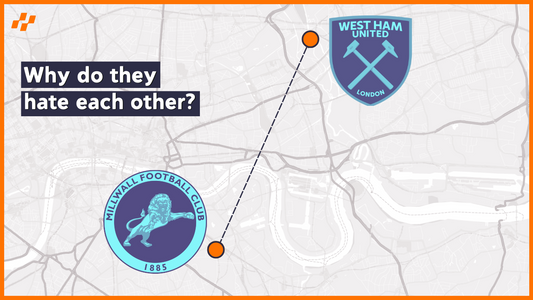
Is 2-0 REALLY The Most Dangerous Lead In Football?
Share
Is 2-0 really the most dangerous lead in football? Even the idea that having a 2 goal advantage over your opponent increases the danger of conceding a goal and ending up losing the match is absurd. But the phrase has been around for a number of years.
The statement even has it’s own Wikipedia page - and managers have been known to use the phrase as an excuse, while people like Gary Lineker have questioned the accuracy. So, is it true or is it just a myth?
In this video, we look to review and essentially find the truth backed by data, whether 2-0 really is the most dangerous lead.
Watch the video on our YouTube channel here
The Concept
The concept is based on the notion that a team that is leading 2–0 will become complacent and have a 'false sense of security' in their lead, they essentially take the foot off the pedal. If the trailing team then scores to make it 2–1, the leading team can panic the momentum swings and they concede further, resulting in a draw, or even a win for the other team. In contrast, a team which is leading 1–0 will tend to concentrate and play with intensity to protect or extend their narrow lead, whilst teams leading by three or more goals have a sufficiently large buffer that comebacks are unlikely.
The phrase could also be used by managers and coaches to instill motivation in their players, if they find themselves losing by 2-0 at half-time. Just one goal could change the entire course of the game, with hope still left for the trailing side.
Broadcasters and commentators could also say the phrase in order to entice and keep viewers hooked on the game, by repeating that 2-0 is not at all a comfortable margin for a game.
Apparently, Czech football coach and television commentator Josef Csaplár popularized it first. The assumption that the leading team feels a false sense of security when 2-0 up is known in Czechia as Csaplár’s trap.
Liverpool notably lost away to Bournemouth in 2016-17 when they were leading 2-0, eventually suffering a 4-3 defeat in a famous example of the saying.
Pundit Gary Lineker, however, questioned the truth of the "2-0 is the most dangerous lead in football" phrase, stating at the time: "When did 2-0 up become a dangerous score? Hear it so often now. Would like to know percentage of games lost from there? Suspect not high."
So how accurate is it really?
Research
During the 2023/24 Premier League season, there were just three instances where a team led 2-0 and ended up losing the match. 2 of the matches included Manchester United coming back to win 3-2 against Nottingham Forest and Aston Villa. So you could say that just demonstrates the state Man United were in that season.
But with 3 matches out of 380 games in the whole season, that’s less than 1% - in fact, this pattern continues if you look at the previous 4 seasons, with 1% or less of matches seeing a 2-0 deficit overturned.
Also in the 2023/24 season, only 8 matches lead to a draw after being 2-0 up, which accounts for just over 2%.
Even back in 2016 Opta worked out that only one in every 50 teams goes on to lose a match after leading 2-0 at half-time.
So this pretty much debunks the theory.
There was also research done by Swiss Football Data, who analyzed over 2,000 matches of the Swiss Football League since the 2010/11 season. They compared the halftime result of matches with the final result.
In 282 matches, a team did lead by 2 goals (171 home team/111 away team). Which accounted for almost 14% of the overall sample which was enough to determine if there were any unusual patterns.
They first looked at how the winning odds were changing based on the halftime result. As you can see, teams leading at halftime by 2-0 had above a 94% chance of winning at the end. With teams 2 goals down after the first half, the odds for your team to manage the turnaround are only a bit above 1%. If your team trails your opponent only by one goal, it takes your chances of winning to 10%. If your team leads by one goal, the chances for a win are at 67%.
They also looked at the average change of goal difference. Overall, the goal difference is more likely to get worse if your team is already trailing at halftime. This does not come as a surprise, since the halftime result is a pretty good indicator of the power balance on the pitch.
Their research completely debunks the cliché of the 2-0 lead. If your team leads with 2 goals, it’s actually more likely that the lead will have increased at the end of the game. Which is most definitely the case when teams play at home, but even away teams have a positive net gain.
They did find an interesting pattern with a one goal lead at halftime. With home teams, it’s more likely that they will increase the lead by the end of the match. But away teams are actually slightly more likely to lose the lead than increase it.
So really the only lead that can actually be considered dangerous is a one goal lead from the away team.
Conclusion
There you have it; statistics show that teams win far more games than they lose or draw once they have established a two-goal lead. The truth is that under 1% of games in a season will feature a two-goal lead that is turned into a deficit, so the phrase is merely an exaggerated cliche.





